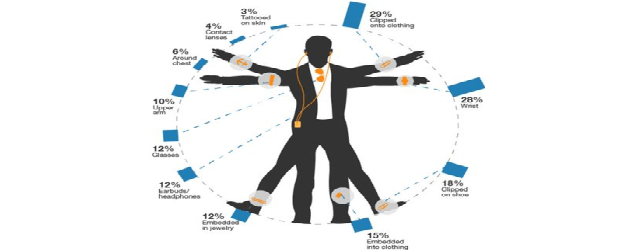When you live in Silicon Valley, it’s sometimes tough to realize that this isn’t the real world.
You know, high-speed Internet connections everywhere, enjoying 4G LTE (long term evolution) mobile service, everyone carrying an ultra light computer, tablet and smartphone (or two).
They’re all on all the time, and they’re all being used.
In industrialized countries, Internet access has been holding stubbornly at about 80 per cent of the population, and tablets haven’t done anything to budge that penetration.
With the increased home and office usage of the Internet, people in industrialized countries (and slowly in developing countries) are increasingly using the technology to reach out to/communicate with others. This has resulted in:
- Nearly 20 million of the 225 million Twitter users follow 60 or more Twitter accounts and nearly 2 million follow more than 500 accounts
More than 800 million people are signed up on Facebook, spend 700 billion minutes on Facebook each month and install more than 20 million apps every day. Facebook users upload more than a million photos weekly
YouTube users upload 72 hours of video per minute and view tens of thousands of hours every day
A friend’s nine-year-old can’t wait to get home after playing baseball to get online and chat/play with friends … in England, Australia, Canada and other locations around the globe.
Born Connected
According to Pew Research 95 per cent of teens ages 12-17 are online, 76 per cent use social networking sites.
When it comes to the next age bracket (18-29), 96 per cent are internet users and 84 per cent use social media sites.
It’s all perfectly normal.
The problem is the connectivity varies for the 7B plus people on the planet.
Connectable – Currently, 2.7 billion people use the Internet–39 per cent of the world’s population. Europe has the highest use, followed by the Americas; but in Africa, only 16 per cent use it, half of the rates of Asia and the Pacific. To economically speed connectivity in emerging countries, Google is considering balloons, and Facebook drones.
Expanding people’s connected lives there is already about one cellphone for all of those people.
In the 12-17 age category 77 per cent have cell phones and for those 18-29 years of age, 97 per cent have cell phones.
More than half of these in industrialized countries have smartphones.
New low-cost phones are being introduced to first get people in countries such as Asia, Africa and Latin America online and then to better total communications … including music/video immersion.
Connectable Options – While feature/smart phones have enjoyed the greatest growth in recent years, there are signs of slowing sales for all of the devices – computers, tablets, phones. The answer to increasing device penetration in emerging countries means cheaper devices will have to be introduced to increase the number of people who are able to exchange information.
If you step back a little, take a deep breath and look around, you see that technology is being seamlessly integrated into our lives and will effectively disappear.
Google’s futurist Ray Kurzweil and many anthropologists say the line between self and technology is already thin and with each new generation it fades even more. The line between self and technology is thin today. Soon, it will simply vanish.
The next crop of kids will assume this is the way the world works.
Fiber Reach
The U.S. has the most broadband subscribers at 93 million in the Organization for Economic Co-Operation and Development countries, but that isn’t saying much. In Canada, there are 11.2 million broadband subscribers ranking it No. 14 in the ITU list. The country may be the largest (DSL-based) but when it comes to fiber to the home, it isn’t doing so hot.
Fiber Tomorrow – While the U.S. ranks with the best when it comes to broadband connectivity, the coverage is based on DSL (slow) service. When it comes to being able to handle the bandwidth needs of tomorrow, the country falls slightly below the middle of the pack and that fiber comes at a cost to the consumer.
Fiber everywhere – especially to the home – isn’t just a nicety, it’s needed to handle tomorrow’s volumes.
U.S. wireless penetration is second only to Japan; and the always-with-you, always-on mobile device dominates the connection for millennials and younger who grew up with the devices. The highly versatile smartphone is so popular it is also the most stolen – 30-40 per cent of robberies – (and most lost) device. It’s so bad, lawmakers are proposing mandatory kill switches on the devices and Boeing introduced a Mission Impossible self-destruct phone that’s gotten lots of attention. Kill switch sounds sorta’, kinda’ good as long as you don’t think too hard about it because it also means someone/something will have to constantly monitor the device and its location.
Internet of Everything
It will all be part of the master plan IoE (Internet of Everything) or SoE (Surveillance of Everything). Of course, since we share everything on every social site that’s available, that really shouldn’t be such an issue because once you’re totally connected, you’ve really abandon privacy. As Amy noted, “I can over think everything and find a million ways to doubt myself.”
No Ellen – Ellen Degeneres and her celebrity selfie had a terrific impact on Twitter during the Oscars typically, selfies are shot and then deleted. Guess people do that to protect their privacy.
But let’s see … name your government agency of choice, search engines and their advertisers, Big Data gatherers/analysts, all those freemium and paid (yes even paid) apps and cybertrackers/crooks. You name it, it knows about you because … you tell em!
More Engaged – As the Web expanded and newer and newer sites entered the scene, people began posting news, information, photos, videos everywhere. The more opportunities present themselves the more people seem to want to share.
Today, the growing majority – especially millennials and younger – aren’t just connected, they’re hyperconnected. Let’s be honest. Security has been an issue since the first day Vint Cerf and Bob Kahn, the fathers of the Internet (no, not Al Gore) unleashed the Internet on us. Even though you erase/block cookies, block ads/script, prevent sending of local information and use encryption as online activities expanded and more objects (things) are connected, opting out of the surveillance system becomes … difficult.
In addition, security is always one or two steps behind cyberthieves (and you’re pretty nonchalant about what you protect) so breaches on bank data, credit cards, site user information and business/government sites are increasingly frequent and profitable. Despite the danger, there is no sign of backing away from the constant stream of information coming to us from our tethered mobile devices. Being constantly on has blurred the boundaries between work/home, responses are expected immediately and the store is always open.
Dining Conversation – It’s a little difficult to eat, let alone carry on a meaningful conversation, when everyone at the table is reading text/email messages, posting on web sites and researching his/her next date. Since some people can’t restrain themselves, a growing number of restaurants are enforcing a no phone use policy. Add ditching baseball caps at the table and I’ll be real happy.
I’m a big believer in the world of connected and personalized everything because frankly, there is no turning back … once you’re connected, you’re connected.
Buying Privacy
But if you want privacy, it’ll cost you! Surveillance and privacy were so important at SXSW that they piped in “retired” NSAer Snowden and Wikileaks Assange (being in Austin would have meant handcuffs).
Millions of messages (text, photos and videos) are being sent every day everywhere in the world using military-grade encryption technology between folks who just aren’t interested in sharing their stuff with you, me, the rest of the world. Security, privacy are sorta’ opposite sides of the coin when people have such a need to share:
– Pew Research found that 60-plus per cent of teens to 24-year-olds have to sleep with their device
– Five minutes after leaving your house/office (which has a phone) you have to call/text drive
– Two people sitting down to enjoy each other and food have to monitor their online life
It almost seems to be an over-dependence on our technology because 99.99 per cent of the time that information will be there even if you don’t turn the device on for an hour or two.
And if it isn’t, how are you going to know you missed it? I agree with Google’s Kurzweil that people will improve because of and with our technology and our ability to access, share, exchange and digest information. In the long-term, we’ll learn how to deal with it and it will have a positive effect.
Still, there are times when people have to disconnect, go offline and focus on creatively solving problems, resolving issues.




